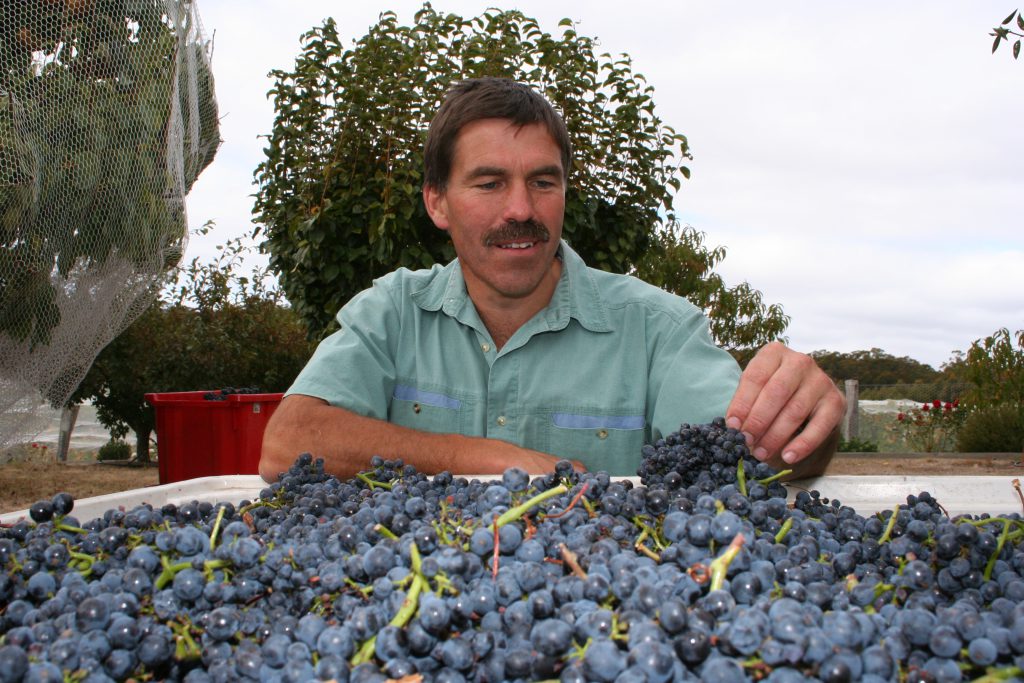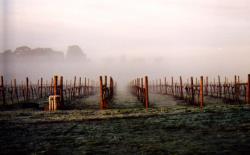 |
 |
 |
 |
 |
 |
 |
 |
 |
 |
|
Ballarat’s Climate. |
|||||||||||||||||||||||||||||||||||||||||||||||||||||||||||||
|
A vineyard’s climate is a major factor influencing how berries
mature, and the overall flavour profile and structure of the resulting
wine. The following pages explain a little about Ballarat’s climate, and
how it influences grape development and therefore the finished wine. Much of the following climatic data is based on observations from official weather stations, and available from the Bureau of Meteorology as historical averages. This data applies to the broad general area, and is known as the Macroclimate. |
|||||||||||||||||||||||||||||||||||||||||||||||||||||||||||||
|
An individual site may have particular features that modify the
overall regional climate. These features would include things like: This local climate, or
Mesoclimate is specific to the individual site |
|
||||||||||||||||||||||||||||||||||||||||||||||||||||||||||||
| Indices relating to Phenological Development Heat accumulation over the growing period of October to March gives a likely indication of the ripening potential of a particular climate. The amount of heat received in the warmest month has lead to the simple index of Mean January Temperature (MJT) – July for the Northern Hemisphere. Climates are graded into five categories, with a Cool Climate experiencing a MJT of between 17.0°C and 18.9°C (Smart and Dry, 1980). One of the most common indices used is Heat Degree Days (Winkler et al, 1974). The basis of this index is that growth of vines is limited to above 10°C; the amount of heat experienced above this baseline is summed for the entire growing season. Gladstones (1992) advocates the adoption of an index known as Biologically Effective Day Degrees. This index similarly sums the heat experienced over ten degrees. However, Gladstones suggests that there is no further advance in phenological development with temperatures above 19°C. He therefore suggests this index with a cut-off at 19°C. |
 |
||||||||||||||||||||||||||||||||||||||||||||||||||||||||||||
| Sunshine Hours, or the number of hours of bright sunshine, is an important
index of the potential for photosynthesis. These figures are dependant on
latitude (Jackson and Spurling, 1988) and may typically be lower near the coast
due to increased cloud (Smart and Dry, 1980). These indices (based on recorded weather data) all help to define the potential for ripening in any given macroclimate - indices relating to different areas are provided in Table 1. It should be noted that these indices provide a general indication only. A particularly suitable site (e.g. north facing aspect, gentle slope, sheltered from the wind) may have a specific mesoclimate more suited to heat accumulation – the converse also applies. Further as these indices are based on averaged data, in any given year, phenological development may be advanced or retarded. |
|||||||||||||||||||||||||||||||||||||||||||||||||||||||||||||
|
Comparison with other viticultural areas: Table 1: Comparison of Climatic Indices for a number of vine growing areas. 1 - Raw figures |
|||||||||||||||||||||||||||||||||||||||||||||||||||||||||||||
|
|||||||||||||||||||||||||||||||||||||||||||||||||||||||||||||
|
These indices give an indication of the potential to ripen fruit – always an issue when you live on the edge. However, there are compensations! Wines produced in the extremes of a cool climate tend to retain higher levels of acid and have a different profile of flavours to fruit from warmer climates. For example, cool climate Chardonnay would tend to be more minerally and display more citrus like characters. These more elegant wines are natural combinations with food – they marry with food rather than dominate. The data above would indicate that Ballarat is particularly well suited to the production of fine examples of Pinot Noir, Chardonnay, Pinot Gris and Sauvignon Blanc (Gladstones, 2000). In particular, the delicate flavours of Pinot Noir demand a cool climate, with maximum temperatures below about 27°C during the ripening period for ideal flavour development. Table 2 gives an indication of Ballarat’s Maximum daily temperatures during the ripening phase. Table 2: Maximum Daily Temperatures for Ballarat. |
|||||||||||||||||||||||||||||||||||||||||||||||||||||||||||||
|
|||||||||||||||||||||||||||||||||||||||||||||||||||||||||||||
References: Bureau of Meteorology (2001) Climate averages [online] available at: http://www.bom.gov.au/climate/averages/ Gladstones J (1992) Viticulture and Environment Winetitles Adelaide Gladstones J. (2000) "Past and Future Climatic Indices for Viticulture." Paper presented at 5th International Symposium for Cool Climate Viticulture and Oenology, Melbourne, Australia, January 16-20. Jackson and Spurling (1988) "Climate and Viticulture in Australia" Chapter 4 in Viticulture (Volume 1: Resources) Coombe B.G. and Dry P.R. Eds. Winetitles Adelaide Smart RE and Dry PR (1980) A climatic classification for Australian viticultural regions The Australian Grapegrower and Winemaker 196: 8, 10 & 16 Winkler AJ, Cook JA, Kliere WM and Lider LA (1974) General Viticulture 2nd edition University of California Press Berkeley cited in Jackson DI and Spurling MB (1988) "Climate and Viticulture in Australia" Chapter 4 in Viticulture (Volume 1: Resources) Coombe B.G. and Dry P.R. Eds. Winetitles Adelaide
|
|||||||||||||||||||||||||||||||||||||||||||||||||||||||||||||